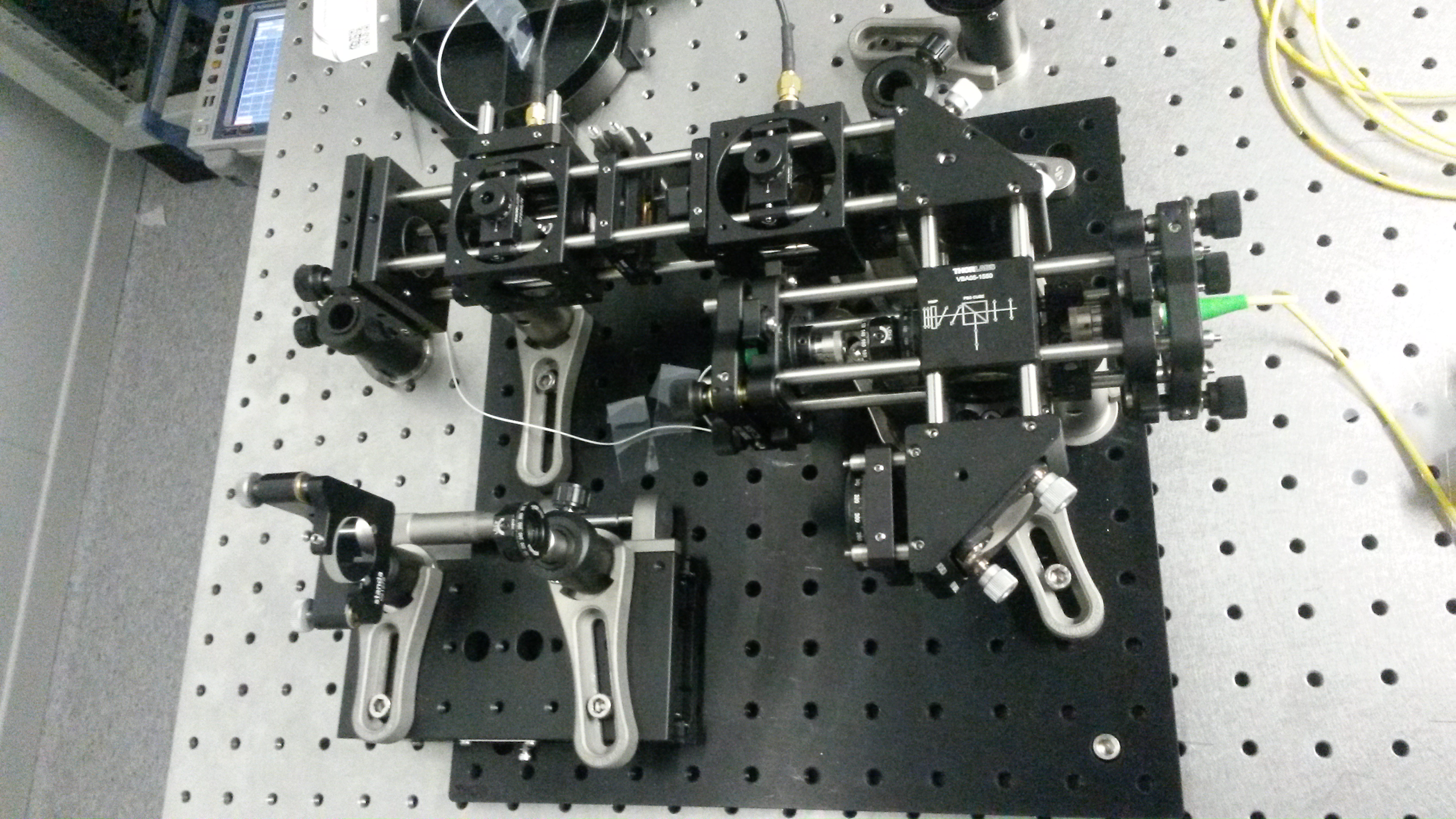Synchronization
The next generation of FEL x-ray light sources will enable scientists to probe the structural dynamics of inorganic and organic matter, resolving in time the breaking chemical bonds in molecules and making of lattice defects in crystals. In so-called pump-probe schemes, a structural change in a sample is initiated using an ultrafast laser; this structural change can then be probed using short and intense bursts of x-rays produced in a FEL. Structural changes in matter can occur on timescales shorter than ten femtoseconds; to resolve such changes without blurring requires the synchronization between pump and probe sources to be active on a single-femtosecond level.
Synchronization and shot-to-shot timing stability at this level represents a significant technological challenge in particle accelerator development. The scientists of the FLT group are using their expertise in ultrafast laser systems and electronics to build an understanding of the noise sources introduced by various accelerator sub-systems and determine how these ultimately influence the timing stability.
As part of this programme the FLT group is collaborating with the engineering department at Lancaster University, working towards the delivery of operational systems for the CLARA accelerator. This collaboration aims to deliver optical-electronic phase measurement and feedback capable of controlling the synchronization between laser and RF sources to single-femtosecond precision.
Ultra-stable clock distributions
In order for the multitude of accelerator sub-systems to work synchronously, a single master radio-frequency clock is distributed throughout the accelerator facility. CLARA uses an ultra-stable mode-locked fiber laser specifically designed for such purposes; the laser light is distributed to end stations along stabilised fiber-optic links which negate the effect of environmental fluctuations on transit time.
Electronic signals derived from the electron beam using novel RF pickups can be compared against the fiber clock to measure the arrival time of electrons at different points along the machine with femtosecond precision.

A balanced optical cross-correlator used to measure and feed back on the transit time of the master clock laster pulses along a fiber optic to an accelerator end station.
Facilities
The FLT group has access to an environmentally-stabilized, EM-shielded laboratory for synchronization R&D. The laboratory is outfitted with multiple diagnostic systems including fast photodiodes, oscilloscopes and ultra-sensitive phase noise analysis for characterising sources of timing jitter and drift. The laboratory is situation adjacent to the CLARA beamline to enable direct integration into the accelerator timing architecture, including access to the fiber clock distribution. Specialised electronics laboratories run complementary platforms for research and development of custom electronic and controls systems.
